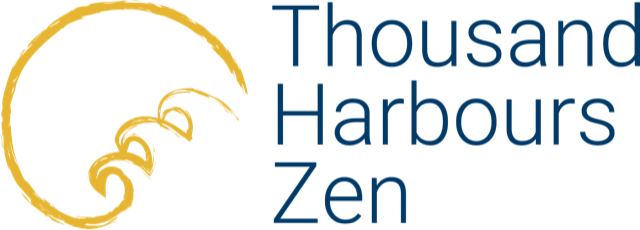Hossenshiki and shinsanshiki: a note from Koun
I’ve been asked to explain the ceremonies we’re doing this June. It's not easy; they exist in a very particular historical context. So I’ll try to explain some of that first.
April 15 will mark the beginning of our first-ever ango, or practice period. Ango originated in India, when itinerant monks gathered to take shelter during the monsoon season. They would reconnect, receive teachings, and deepen their practice; then, when the skies cleared, they would return to their life of wandering, offering, and seeking the dharma in the world all around them. In Zen, ango has evolved to be half of the annual monastic schedule, with an ango in summer and another in winter. Traditionally, during ango, monks do not enter the monastery or leave, and practice is intensifed. (Sensouji obviously isn't a monastery, and there's no issue of coming or going. But to reflect the ango tradition, we'll increase our offerings and intensify our practice.)
In Zen, one factor that distinguishes ango from other parts of the year is the role of shuso, or head monk. In each practice period, one novice is chosen to step into a leadership position, guiding the other monks and setting the tone of practice. For those months, the abbot leans heavily on the shuso, trusting them to assume responsibility for the schedule, for delegation of tasks, and so on. The ango culminates in hossenshiki (“dharma combat ceremony”), in which the shuso momentarily takes the teaching seat, presents a koan, and then receives questions—and challenges—about it. When it’s over, the shuso steps down from that seat, returning to novice practice. But the other monks present have verified the shuso’s understanding; with this, the shuso is promoted from the rank of joza to zagen, the last step prior to dharma transmission. (Hossenshiki is itself an evolution of what is called “platform ordination,” which has its own deep history.)
On June 21, Sensouji will host its first-ever hossenshiki, with Jikei Kido as shuso. That same day, we will hold shinsanshiki (“Mountain Seat Ceremony”), in which I will be formally seated as Sensouji’s abbot. Like Jikei, I will stand before the assembly and receive dharma questions—my first time in this formal way since I was a shuso 20 years ago. And like Jikei, I will have a change in title, from osho to daiosho.
What does it all mean? For Jikei, it’s a moment of recognition by peers, a step toward full ordination as a transmitted priest. For me, it’s perhaps a bit more complicated. Through the Mountain Seat Ceremony, my identity becomes fused with Sensouji (to the extent that in Japan, I will sometimes be called “Sensouji” instead of “Koun”). And by officiating Jikei’s Dharma Combat Ceremony, I become authorized to offer that same ceremony to others in the future.
What does it mean for the community? A lot of things. This is us meeting the tradition, agreeing to it as it is and positioning ourselves in its history as the first temple in Canada to hold these ceremonies. It’s also standing up as members of the Soto School, accepting the support of others and offering ourselves as a place of support for them. To make these ceremonies happen, we will receive the generous support of about 20 priests from Canada, the US, and Japan. They are traveling from around the world to be here, to help, and to verify what we are doing; and we in turn have the honour of hosting them, learning from them, and deepening our connection with them. They are coming here to tell us we’re capable of this and more. We are saying yes to that. We are saying we’re ready to do whatever is next.
I’ll be honest—I don’t know what that next thing is. But I know it comes down to increasing both the depth and breadth of what Thousand Harbours Zen offers. There is an aspect of recognition in these ceremonies, but I want us to understand them not as a culmination but rather as the beginning of something. Let’s see what we’re capable of.
Gassho,
-koun
